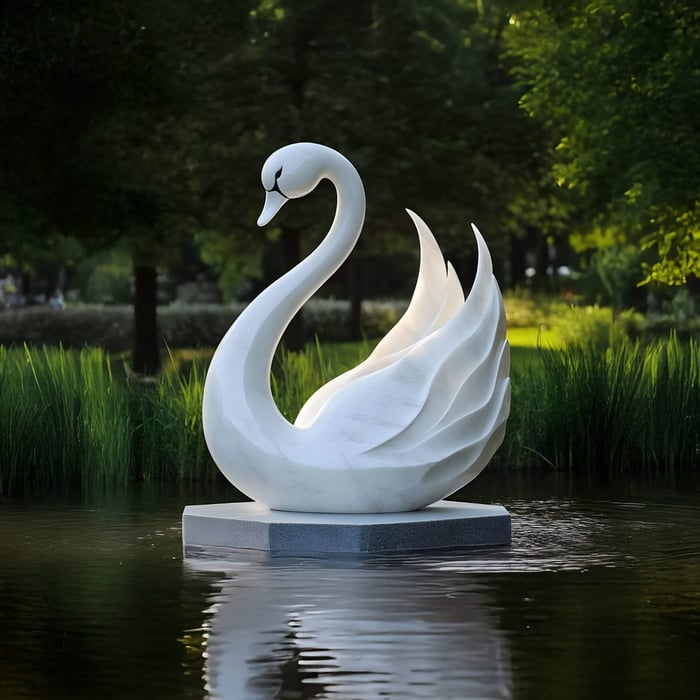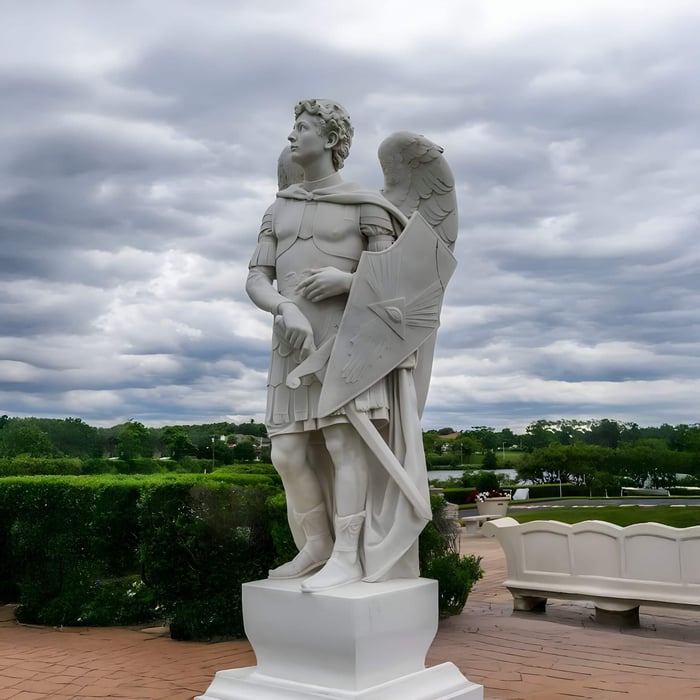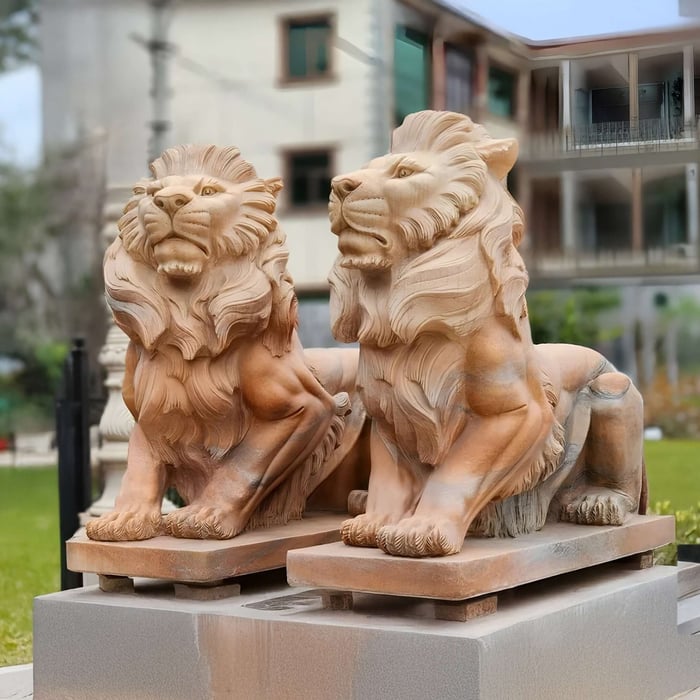Marble sculptures have long held a prestigious place in the world of art. Renowned for their timeless beauty and enduring value, these masterpieces attract art collectors who appreciate both the aesthetic and historical significance of the medium. As an investment, marble sculptures offer a unique blend of cultural heritage and modern appeal, making them a standout asset for those looking to diversify their art portfolios. In this guide, we explore what marble sculptures are, discuss their evolution from classical to modern art, and provide practical tips on evaluating quality and authenticity. We’ll also delve into current market trends and investment strategies to help you navigate this fascinating sector. Whether you’re new to art investment or a seasoned collector, read on to discover how these works can enrich your collection and yield long-term value.
Understanding Marble Sculptures
Marble sculptures are three-dimensional artworks carved from marble - a material celebrated for its natural beauty, durability, and association with luxury art. Their enduring appeal stems from centuries of tradition and the meticulous craftsmanship involved in stone carving.
Definition and History
Marble sculptures refer to artworks that are chiselled from blocks of marble using a range of techniques from traditional hand-carving to modern mechanical methods. Historically, great cultures such as the Greeks and Romans set high standards with their monumental works, establishing marble as a symbol of sophistication and enduring quality. Over time, the art form evolved to include not only classic sculptures but also modern interpretations that embrace contemporary design trends while honouring an artistic heritage.
Artistic and Cultural Significance
For centuries, marble has symbolised luxury and permanence. The use of this premium material in sculptures has created a legacy of timeless art that continues to influence the art world. Today, collectors appreciate marble not only for its visual appeal but also as a tangible connection to artistic traditions and cultural narratives. This enduring relevance makes marble sculptures a favoured asset among art investors seeking both beauty and cultural capital.
Why Invest in Marble Sculptures?
Investing in marble sculptures offers unique benefits, blending aesthetic appeal with long-term financial potential. These pieces are highly valued for their craftsmanship, rarity, and the prestige they bring to a collection.
Appreciation and Market Value
High-quality marble sculptures tend to appreciate over time. Their value is often driven by factors such as the quality of the marble, the skill of the stone carving, and the reputation of the artist. For art collectors, these pieces represent a solid investment strategy. As the market for luxury art expands, collectible works carved from premium marble often become prized assets that appreciate steadily, providing both cultural and financial returns.
Rarity and Exclusivity
One of the main attractions of investing in marble sculptures is their rarity. Hand-carved pieces, especially those created by renowned artists or from premium marble, are produced in limited quantities. This scarcity enhances their desirability and contributes to their market value. Collectors often seek out these exclusive works to build a collection that stands apart, combining artistic excellence with investment potential.
Cultural and Aesthetic Investment
Marble sculptures add significant cultural capital to any collection. These pieces capture the essence of centuries-old traditions and are imbued with a sense of timeless art that transcends trends. For many collectors, the decision to invest in marble is as much about preserving cultural history as it is about acquiring a luxury sculpture that elevates the aesthetic of their living space. Such artworks can serve as centrepieces in prestigious collections, symbolising both refinement and artistic integrity.
The Marble Sculpture Market: Trends and Insights
Understanding market trends is essential for making informed investment decisions. The market for marble sculptures is influenced by both historical factors and contemporary demand.
Market Trends and Demand
Recent years have seen a renewed interest in classic sculptures carved from marble. Collectors are increasingly drawn to pieces that combine traditional craftsmanship with innovative design elements. Trends indicate a growing demand for both timeless masterpieces and modern sculptures that reinterpret classic themes in new ways. This dual appeal is driving the market for marble sculptures, making them highly sought-after by art collectors worldwide.
Economic Factors
The value of marble sculptures is also affected by broader economic conditions and fluctuations in the art market. Global economic trends, changes in collector preferences, and shifts in cultural capital can all impact art valuation. As such, staying informed about economic indicators and art market analyses can help investors identify potential growth areas and make strategic decisions regarding their collections.
Future Outlook
The future of marble sculpture investment appears promising. With a continued emphasis on heritage and quality, along with innovations in modern sculptural design, these artworks are poised to remain highly valued. Emerging collectors and seasoned investors alike are recognising the long-term benefits of acquiring premium marble pieces, as they continue to be celebrated for their craftsmanship and enduring appeal.
Evaluating Quality and Authenticity
Assessing the quality and authenticity of a marble sculpture is critical for any serious art collector. Here are some key factors to consider when evaluating these pieces.
Materials and Craftsmanship
When examining a marble sculpture, pay close attention to the quality of the stone and the precision of the stone carving. Look for fine details in the carving that indicate skilled workmanship. High-quality marble should have a consistent, elegant appearance with minimal blemishes, and the finishing should enhance the natural beauty of the material. These factors play a significant role in determining the overall value of the piece.
Provenance and Artist Reputation
The authenticity of a marble sculpture is often supported by its provenance and the reputation of the artist or gallery. Documentation, such as certificates of authenticity and historical records, can provide valuable assurance of a piece’s legitimacy. Collectors should consider the artist's track record and reputation in the art world, as established names often command higher prices and enjoy greater appreciation in the market.
Comparative Analysis
It’s also useful to compare similar pieces in terms of style, material quality, and market benchmarks. This comparative analysis can help you understand current trends and determine a fair price for the artwork. Resources such as art valuation reports and consultations with professional appraisers can further aid in making an informed investment decision.
Strategies for Successful Investment
Developing a clear investment strategy is crucial when it comes to acquiring marble sculptures. Here are some strategies to consider for building a robust and diversified art collection.
Building a Diversified Collection
Diversification is key in art investment. Consider curating a collection that includes both classic sculptures and modern interpretations. This balance can help mitigate risks and ensure that your portfolio reflects a broad spectrum of artistic styles and eras. By including pieces that appeal to different collector tastes, you create a dynamic collection that can appreciate in value over time.
Consulting Experts and Appraisers
Working with art consultants, reputable galleries, and professional appraisers is essential for navigating the marble sculpture market. Experts can offer valuable insights into current trends, quality standards, and market values, helping you to make informed decisions. Their guidance can be particularly beneficial for new investors, providing a solid foundation for a successful investment strategy.
Long-Term vs. Short-Term Investment
Deciding whether to hold your marble sculptures as long-term investments or to trade them more frequently depends on your financial goals and market conditions. Long-term investments often benefit from gradual appreciation and the enduring cultural significance of high-quality pieces, while short-term strategies may be more speculative. Assess your personal investment goals, consider your risk tolerance, and plan your collection accordingly.
Conclusion: Invest in Timeless Art
Marble sculptures offer a unique opportunity for art collectors to invest in pieces that combine beauty, history, and enduring value. Their timeless appeal and meticulous craftsmanship make them a standout asset in any art portfolio. By understanding market trends, evaluating quality and authenticity, and developing a clear investment strategy, you can build a collection that not only enhances your living space but also appreciates in value over time.
If you’re ready to explore the world of premium marble sculptures and discover the potential of collectible art, consider visiting Giant Sculptures. Discover exceptional works that capture the essence of artistic heritage and contemporary design, and take the next step towards building a refined and rewarding art investment portfolio.























































































